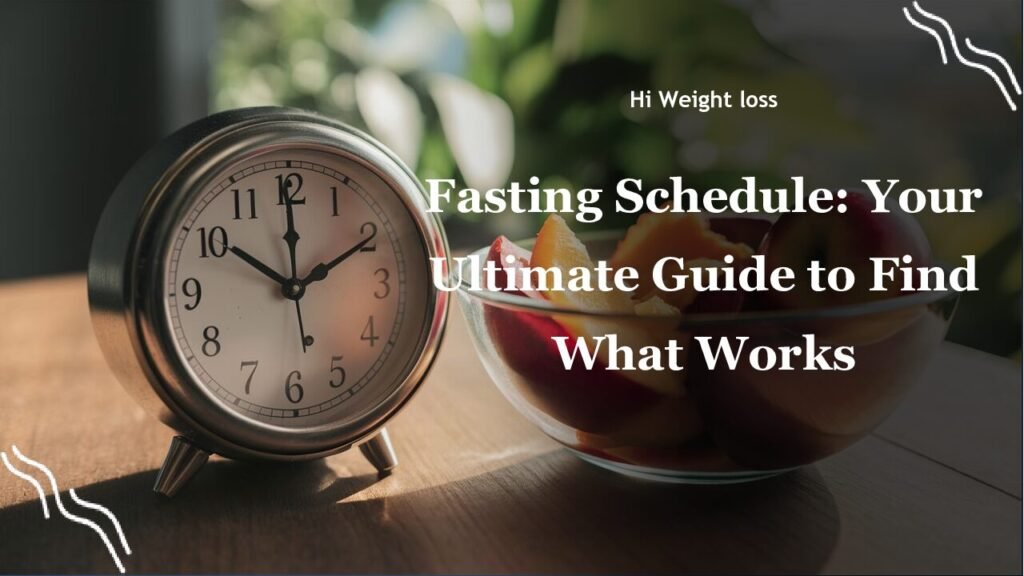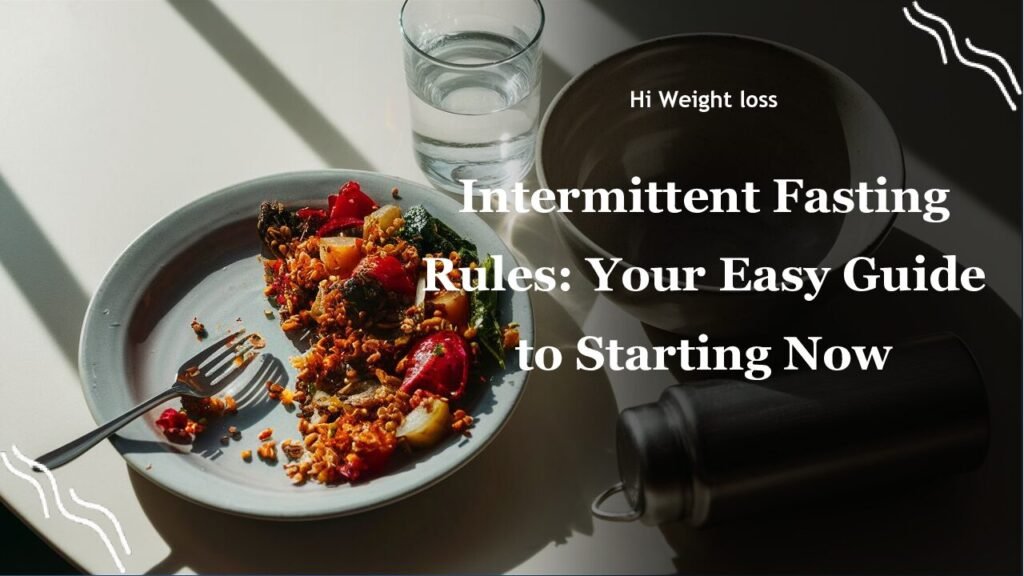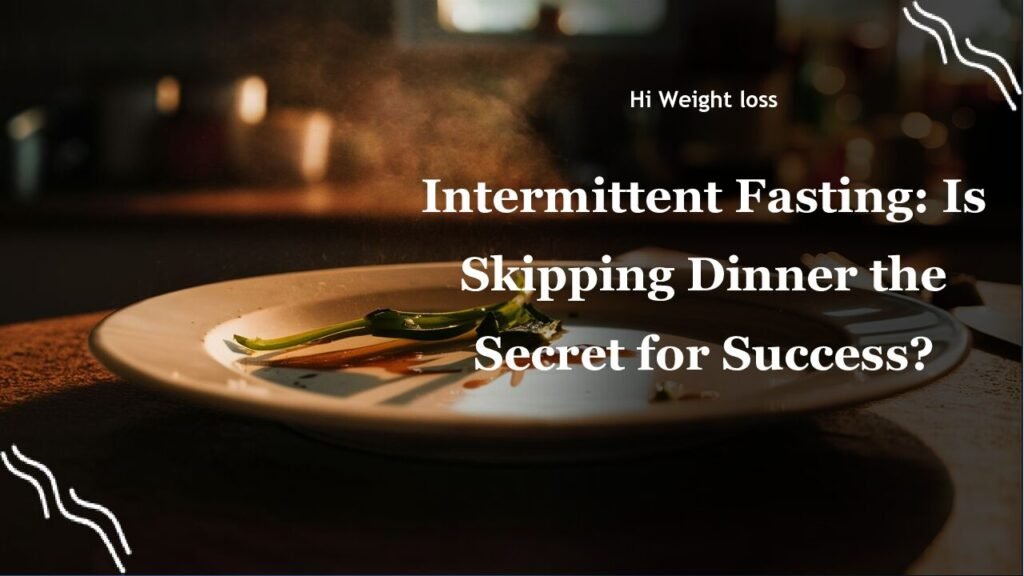Are you feeling overwhelmed by the sheer number of diet plans out there, especially when it comes to fasting? It’s like trying to navigate a maze blindfolded, and you’re not alone in this. Many people struggle to find a sustainable eating schedule that fits their lifestyle, but what if there was a way to simplify things and find what works for you? This article is going to explore different types of fasting schedules, from the popular 16:8 method to alternate-day fasting, so you can decide what works best for you and your specific goals.
What is the Best Fasting Schedule?
Choosing the best fasting schedule is not a one-size-fits-all situation, as it really depends on what you hope to achieve and your lifestyle. I remember when I first tried intermittent fasting, I jumped straight into the deep end. I tried a 20-hour fast, and let me tell you, it didn’t go well. I was irritable, lightheaded, and the experience was definitely not sustainable. I quickly realized that what works for one person may not work for another, and it’s crucial to start slow and listen to your body.
Understanding Different Fasting Methods
Let’s explore several commonly recommended fasting schedules. Each has its unique approach and potential benefits. We’ll delve into the 16:8 method, time-restricted eating, alternate-day fasting, and the 5:2 diet. It’s helpful to understand these before choosing the schedule that works best for you.
The Popular 16:8 Method
The 16:8 method is one of the most widely adopted intermittent fasting approaches. It involves fasting for 16 hours each day and eating within an 8-hour window. For example, you might eat between 10 AM and 6 PM, and then fast from 6 PM to 10 AM the next day. This pattern often fits well with people’s daily routines.
Research has shown that the 16:8 method can support weight loss, improve insulin sensitivity, and reduce the risk of chronic diseases, such as type 2 diabetes. I’ve personally known a few people who have used this approach to lose weight without feeling too restricted. It’s often cited as the “_best intermittent fasting schedule for beginners_” because it can be easily integrated into most daily schedules.
Time-Restricted Eating: The 4-6 Hour Window
If you want to take it a step further, there’s time-restricted eating (TRE) that confines eating to a 4-6 hour window. This might sound intense, but the results can be impressive. A study found that participants restricting their eating to four or six hours a day cut their daily calorie intake by about 550 calories and lost about 3% of their body weight over 10 weeks.
It’s important to note that while effective, this method might not be suitable for everyone, as restricting eating to such a short window requires quite a bit of self-discipline. A friend of mine tried this and admitted they were constantly thinking about food, which made it difficult to focus during the fasting period. It taught me that _the best fasting schedule_ is not always the most restrictive, but rather the most sustainable.

Alternate-Day Fasting: A Unique Approach
Then there’s alternate-day fasting, where you alternate between days of normal eating and days of fasting. This could mean eating normally on Monday, Wednesday, and Friday, and then fasting on Tuesday, Thursday, and Saturday. Some people find this to be an easier method because it breaks the intensity of consecutive days of fasting.
Studies suggest that alternate-day fasting can lead to weight loss, with a typical loss of 7-11 pounds over 10 weeks. However, some people might struggle with the complete fast days. I’ve heard stories of people becoming fatigued or experiencing difficulty concentrating on days they fast completely. This method also reminds us that _the best intermittent fasting schedule_ should fit your capacity to adapt to change.
The 5:2 Diet: Calorie Restriction on Select Days
The 5:2 diet involves eating normally for five days a week and restricting calorie intake to around 400-500 calories on the other two days. While those days can feel a bit challenging, many find this to be a more manageable approach compared to full-day fasting. It also gives you more freedom with food choices on your normal eating days.
Research indicates that the 5:2 diet can be effective for weight loss and improving cardiovascular health. However, as with all fasting methods, results can vary depending on individual adherence and overall diet quality. This underscores the need to be mindful of what you consume on the days you are not fasting. It has been noted that one should not see this as an opportunity to binge eat on non-fast days. The Harvard School of Public Health has additional insights on this diet, so take a moment to review _intermittent fasting_ on their site.
Comparing Fasting Methods
So, how do these methods stack up against each other? Here’s a handy table that summarizes the key differences.
| Method | Fasting Window | Eating Window | Key Feature |
|---|---|---|---|
| 16:8 Method | 16 hours | 8 hours | Daily fasting |
| Time-Restricted Eating | 18-20 hours | 4-6 hours | Short eating window |
| Alternate-Day Fasting | 24 hours | Normal eating | Fasting every other day |
| 5:2 Diet | Varies (typically 24 hours) | Normal eating | Restricted calories on 2 days |
Personal Experiences and Insights
I’ve personally experimented with a few different fasting schedules. I found the _16:8 intermittent fasting schedule_ to be the most sustainable. It fits well with my work schedule, and I don’t find myself feeling overly restricted. It also allowed me to explore healthy eating habits. After a while, I noticed it became easier to avoid snacking at night. I also observed that it helped stabilize my blood sugar levels, which made me feel more energetic throughout the day.
A colleague of mine tried the alternate-day fasting method, but they had to stop because it interfered with their social life. They often found that they had to skip dinners or other social events because those days fell on their fasting days. This is a good example of why it’s so important to choose the schedule that fits best into your personal circumstances.
Another friend found the _best fasting schedule for weight loss_ was the 5:2 diet. They appreciated the flexibility of having five “normal” eating days. They planned their two low-calorie days for times when they were not too busy or stressed, and they noted this was crucial to their success. A key tip they shared was to ensure that they are still consuming nutrient rich foods during the low calorie days to avoid malnourishment. This is important for your health.
Key Considerations Before Starting
Before starting any new diet or fasting regimen, it is essential to consult with a healthcare professional. This is particularly important if you have any underlying health conditions. Your doctor can help you determine the safest and most effective approach for your specific needs. It is also helpful to _do your research_ to make an informed decision that you will be consistent with.
Consistency is also key to seeing results. The best fasting schedule is one that you can maintain over the long term. It’s also important to remember that fasting is not just about restricting eating times, it is also about listening to your body. The _benefits of intermittent fasting_ are well documented, but they can only occur if your body can handle it consistently.
Remember that weight loss is not the only benefit of fasting. Improved insulin sensitivity, reduced risk of chronic diseases, and greater mental clarity are also potential benefits to consider. For some, intermittent fasting may be more about gaining control over their eating habits than solely about losing weight. It’s about finding the right balance for your body and lifestyle. You should make an informed decision.
Conclusion
Ultimately, finding the best fasting schedule for you involves experimentation and patience. It’s not about forcing your body into a strict routine, but rather finding a pattern that harmonizes with your lifestyle and health goals. Remember my personal experience of trying a too-restrictive approach from the outset? This underscores the importance of starting with a sustainable plan and adjusting as needed. Whether you choose the 16:8 method, time-restricted eating, alternate-day fasting, or the 5:2 diet, the key is to be consistent and to listen to your body’s signals. If one method doesn’t work, feel free to experiment with others.
So, are you ready to explore the world of intermittent fasting and find the schedule that fits you best? Start by doing your research, and if necessary, consult with your health professional. Share your experiences with friends or in a supportive community, and remember, you are not alone on this journey. Share this article and let’s support each other!
FAQ
What is the 16:8 method?
The 16:8 method involves fasting for 16 hours a day and eating within an 8-hour window, typically fitting into a daily routine and considered a good starting point for beginners.
Is time-restricted eating safe?
Time-restricted eating, which limits eating to a 4-6 hour window, can be safe, but it may not be suitable for everyone, requiring careful planning and possibly guidance from a healthcare professional.
How effective is alternate-day fasting for weight loss?
Alternate-day fasting can be effective for weight loss, with studies showing typical weight losses of 7-11 pounds over 10 weeks, but it might not suit everyone due to its rigid fasting days.
What is the 5:2 diet?
The 5:2 diet involves eating normally for five days a week and restricting calorie intake to 400-500 calories on the other two days, which can improve cardiovascular health if applied properly.
Should I consult a doctor before starting intermittent fasting?
Yes, it’s essential to consult with a healthcare professional before starting any new diet or fasting regimen, especially if you have any underlying health conditions, to ensure the approach aligns with your health needs.



